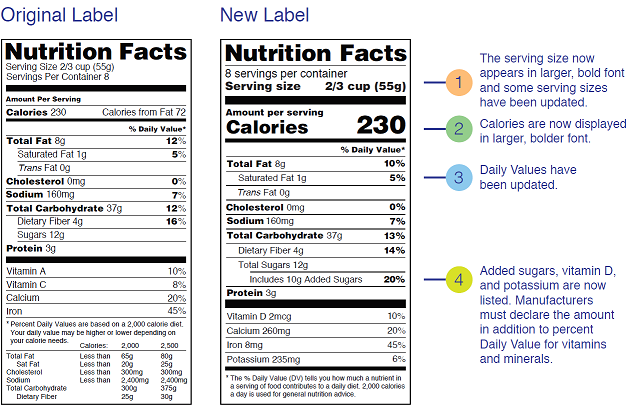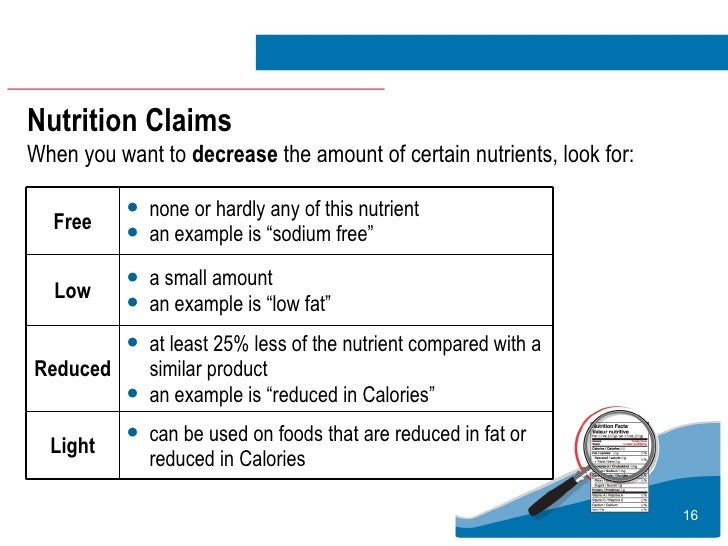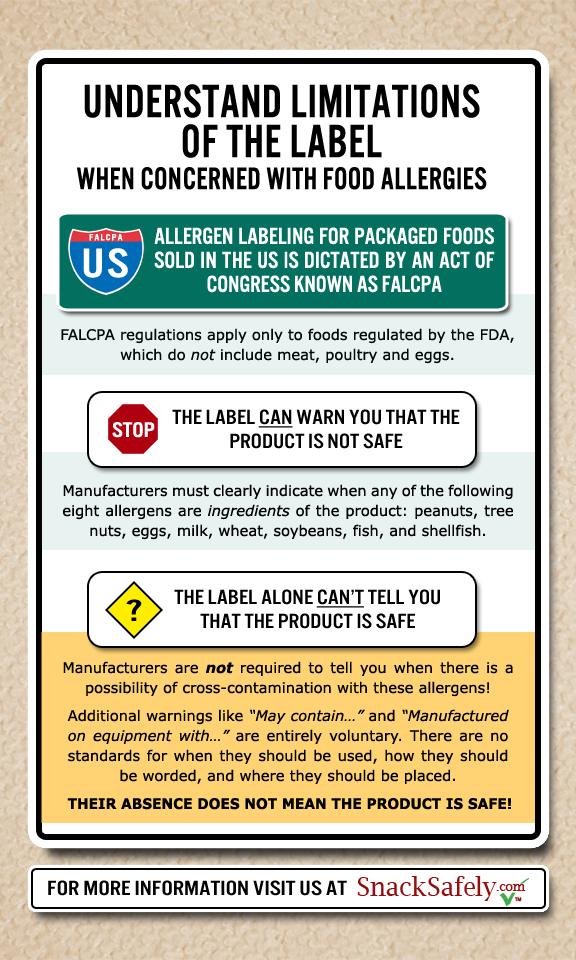45 understanding ingredients on food labels
Understanding Ingredients on Food Labels | American Heart Association ... There are many terms used for sugar on food labels. You might see sugar listed as the fourth ingredient in a product and think it's not so bad. But sugar can also be listed as high-fructose corn syrup or corn syrup, agave nectar, barley malt syrup or dehydrated cane juice, to name just a few. Read more about sugar and sweeteners. Reading Food Labels | ADA - American Diabetes Association It’s time to decode those food claims. Trying to figure out nutritional information on labels and packaging isn’t easy. The good news is that we can help. Untangle packaging claims. If you get tripped up on food content claims, you’re not alone. Fat free vs. low fat vs. reduced fat. Low ...
How to Read Food Labels Without Being Tricked - Healthline The product may contain very little whole grains. Check the ingredients list — if whole grains aren't in the first three ingredients, the amount is negligible. Fortified or enriched. This ...

Understanding ingredients on food labels
Reading & Interpreting Ingredient Lists on Food Labels 100 grams butter. 150 grams brown sugar. 50 grams egg. 215 grams flour. 10 grams baking powder. 4 grams cinnamon. 5 grams salt. 250 grams sweetened applesauce. This ingredient list seems pretty ... Reading food labels shouldn't be complicated. Here's how to understand ... Health Canada. On June 30, Health Canada announced new nutrition labelling regulations that will require prepackaged foods high in saturated fat, sugars and/or sodium to display a front-of-package ... Labels - Understanding ingredient labels - Center for Research on ... Next, you're likely to see "vegetable oil (sunflower, corn, and/or canola oil)" listed, followed by the least used ingredient "salt" which in this case enhances the flavor. Another example is hand lotion. Typically, you'll find "water (aqua)" listed as the first ingredient, this means the majority of the product is made up of water.
Understanding ingredients on food labels. How to Read a Food Label | Food Allergy Research & Education Managing life with a food allergy means reading packaged food labels—every time you buy that food. This is true even if you have purchased the food hundreds of times. Ingredients and manufacturing processes can change without warning. Make a habit of carefully reading labels to ensure you avoid any potential allergens. Understanding Food Labels - Food Ingredient Facts Understanding food labels, including what ingredients and additives are present foods, can seem like a daunting task. Fortunately, the U.S. Food and Drug Administration (FDA) serves as the primary regulatory agency responsible for ensuring the quality and safety of foods and requires that ingredients intentionally added to foods be listed on food labels. Understanding Food Nutrition Labels - American Heart Association 5 - Understand % Daily Value. The % Daily Value (DV) tells you the percentage of each nutrient in a single serving, in terms of the daily recommended amount. If you want to consume less of a nutrient (such as saturated fat or sodium), choose foods with a lower % DV (5 percent or less). If you want to consume more of a nutrient (such as fiber ... How To Read Food and Beverage Labels | National Institute on ... At the top of the Nutrition Facts label, you will find the total number of servings in the container and the food or beverage's serving size. The serving size on the label is based on the amount of food that people may typically eat at one time and is not a recommendation of how much to eat. Read more about serving and portion sizes.
IFT panelist challenges idea consumers read labels | Food Business News In a panel discussion at IFT First, July 11-13 at McCormick Place in Chicago, Mr. Lilienfeld said as few as 5% of consumers read labels and that consumer packaged foods companies should not rely ... Understanding Ingredients In Food Labels | Eufic Table 1: EU list of potential allergens that have to be listed on food labels. Cereals containing gluten ( i.e. the grains of wheat, rye, barley, oats, spelt, kamut or their hybridised strains) and products thereof. Crustaceans and products thereof. Eggs and products thereof. Fish and products thereof. Easy Tips To Understand The Ingredient List On Food Labels Other ingredients, including soy lecithin and xanthan gum, modify the texture and mouth feel of foods and offer some health benefits. (Lecithin is a fat that is essential for the cells of the body, and xanthan gum is used to lower cholesterol levels and as a laxative.) Don't be fooled by healthy-sounding ingredients. How to understand food labels - Eat For Health Sometimes labels will include nutrition content claims like 'low fat', 'reduced salt' or 'high fibre'. These claims can only be used if the food meets certain criteria. For example, with a 'good source of calcium' claim, the food must contain more than a set amount of calcium. While nutrition content claims can generally guide ...
Understanding Food Labels and Ingredient Lists: FAQs and Do's and Don'ts Fresh eggs. Foods with insignificant amounts of the nutrients on the required label, such as coffee, tea, spices, flavor extracts, and food colors. These may contain ingredient labels but are unlikely to contain nutrition facts labels. Packaged single-ingredient meat products, such as deer, bison, rabbit, quail, wild turkey, and ostrich. How to Read and Understand Ingredient Labels (and Why) 3. Tricky Trans Fats. You won't find trans fats actually listed in the ingredient label, but rather ingredients that contain trans fats. These include partially hydrogenated oil and hydrogenated oil. 4. In-Disguise Ingredients. Some ingredients are listed under names that aren't as easily recognized. Understanding Ingredients on Food Labels | American Heart ... Understanding Ingredients on Food Labels. Food labels are an important source of information about calories and the nutritional value of the foods you eat, a crucial tool in building a heart-healthy diet. The Nutrition Facts information is always displayed in the same orderly fashion and helps you understand how much of certain nutrients that ... Understanding Food Labels Understanding Food Labels The only way to prevent a serious allergic reaction is to avoid the food allergen. Reading every food label, every time is one of the best ways to ... Other food ingredients may or may not be declared on the label. Consumers can call the manufacturer and ask if a product contains their allergen(s). In some cases, food ...
PDF Understanding Food Labels! Helping your kids understand how to read the Nutrition Facts label on food and beverage packages is important. After all, the label is a tool for making healthy food choices that they'll be able to use throughout their lives. Tips for Kids Be a Role Model for Label Reading Family Actions for Making Smart Food Choices Use teachable moments in ...
Understanding food labels | Diabetes UK It’s important to check the ingredients list or back of pack label so you can compare two products like for like per 100g. Six ways to be label savvy. Follow these tips to become expert at understanding labels in minutes: With traffic light labels, go for green, occasionally amber, and red only as a treat.
Understanding Food Labels | The Nutrition Source | Harvard T ... Under the Food Allergen Labeling and Consumer Protection Act of 2004, eight major food allergens—milk, fish, tree nuts, peanuts, shellfish, wheat, eggs, and soybeans—are required to be listed in a “contains” statement near the Ingredients list if present in a food. An example would be “contains wheat, milk, and soy.”
Food Labeling & Nutrition | FDA Food labeling is required for most prepared foods, such as breads, cereals, canned and frozen foods, snacks, desserts, drinks, etc. Nutrition labeling for raw produce (fruits and vegetables) and ...
How to Understand and Use the Nutrition Facts Label | FDA Overview. The information in the main or top section (see #1-4) of the sample nutrition label (below) can vary with each food and beverage product; it contains product-specific information ...
Understanding Food Labels - Nutrition: Science and Everyday Application The value printed on the Nutrition Facts panel is the percent DV, which tells you how much one serving of the food contributes towards meeting the daily requirement for that nutrient. The FDA uses the following definitions for interpreting the %DV on food labels:4. 5%DV or less means the food is low in a nutrient.
A Complete Guide to Reading and Understanding Nutrition & Ingredient Labels Knowledge is Power. At the end of the day, having more knowledge about the foods you consume gives you more power to control your health. When buying foods, read the label, do a little inner translating, and ignore the health claims on the front. Health claims such as "diet," "natural," or "low-fat," may still be present on products ...
Understanding Food Labels - Home & Family Ingredient List. Packaged food products include a list of ingredients used in making the food. Ingredients are listed in order of weight with the most abundant ingredient appearing first, and the ingredient in the smallest amount being last on the list. Healthy eating tip: avoid buying foods that list sugar in the top 5 ingredients. Best Before ...
Sunscreen: How to Help Protect Your Skin from the Sun | FDA Nov 08, 2021 · The labels are required to state whether the sunscreen remains effective for 40 minutes or 80 minutes when swimming or sweating, and all sunscreens must provide directions on when to reapply ...
Easy Guide to Understanding Food Labels When You Have High ... Food labels tell you what is in the food and drinks you are consuming. Every packaged and processed product should have a food label to help you determine its nutrition content. The food labels can help you sieve through misleading claims, shop faster and make better food choices to lower your cholesterol levels.
Understanding Food Labels, Part II: The Ingredient Statement The Food and Drug Administration (FDA) has specific . requirements for Ingredient Statements that all pro-cessors must follow: • Ingredients must be listed by weight, from . highest to lowest. • Any "multi-component" ingredients must . be followed by their own list of individual ingredients (see flour in the previous exam-ple).
Understanding Ingredients on Food Labels - Professional Heart Daily ... Understanding Ingredients on Food Labels. Food labels are an important source of information about calories and the nutritional value of the foods you eat, a crucial tool in building a heart-healthy diet.
Understanding Food Labels | Nutrition facts, ingredients, claims, high Reading food labels is a must when food shopping! Prepackaged foods are required to have nutrition labels. Food labels are voluntary for "fresh foods" such as raw meats, fish, poultry, fruits, and vegetables. The Nutrition Facts on the food label must show the following information: u0007Serving Size. A uniform amount for all labels.
Understanding Food Labels | Food & Water Watch Country of Origin Labels. For now, the United States requires Country of Origin Labeling (COOL) on chicken, seafood, produce and some nuts that tells us basic information about what country our food was produced in - but the food industry has limited even this most basic element of transparency. Until late 2015, beef and pork were also ...
Labels - Understanding ingredient labels - Center for Research on ... Next, you're likely to see "vegetable oil (sunflower, corn, and/or canola oil)" listed, followed by the least used ingredient "salt" which in this case enhances the flavor. Another example is hand lotion. Typically, you'll find "water (aqua)" listed as the first ingredient, this means the majority of the product is made up of water.
Reading food labels shouldn't be complicated. Here's how to understand ... Health Canada. On June 30, Health Canada announced new nutrition labelling regulations that will require prepackaged foods high in saturated fat, sugars and/or sodium to display a front-of-package ...
Reading & Interpreting Ingredient Lists on Food Labels 100 grams butter. 150 grams brown sugar. 50 grams egg. 215 grams flour. 10 grams baking powder. 4 grams cinnamon. 5 grams salt. 250 grams sweetened applesauce. This ingredient list seems pretty ...
/person-lifting-milk-jug-from-dairy-aisle-shelf-693673429-5b2a66658e1b6e003e684b0d.jpg)











Post a Comment for "45 understanding ingredients on food labels"